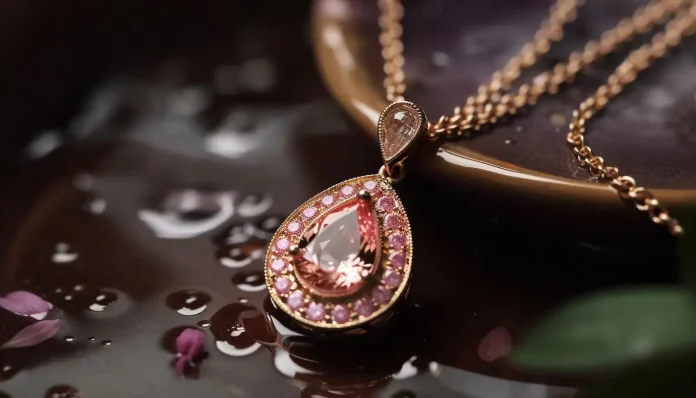Jewelry has long been an expression of cultural identity, a reflection of traditions, beliefs, and aesthetics. In the ever-evolving world of fashion and design, the intersection of cultures has given rise to a fascinating phenomenon: cultural mosaics in jewelry design. This trend goes beyond mere adornment; it’s a celebration of diversity, a harmonious blend of heritage, and a testament to the interconnectedness of the global community.
The Kaleidoscope of Cultural Influences
Jewelry design has transcended geographical boundaries, drawing inspiration from diverse cultures around the world. From the intricate patterns of Middle Eastern filigree to the vibrant colors of Indian gemstones, designers are weaving a tapestry of cultural influences into their creations. Let’s delve into some of the prominent cultural motifs that have become integral to contemporary jewelry design.
1. Islamic Geometry: The Beauty of Symmetry
Islamic art and architecture have long been celebrated for their geometric patterns, and these intricate designs have found their way into modern jewelry. From tessellations to arabesques, the use of Islamic geometry adds a sense of symmetry and precision to jewelry pieces.
- Example: Moroccan-inspired mosaic pendants featuring complex geometric shapes, creating a mesmerizing play of light and shadow.
2. Mughal Elegance: A Glimpse of Royalty
The Mughal Empire’s opulent jewelry has left an indelible mark on the world of design. Intricately carved gemstones, elaborate enamel work, and the use of gold are characteristic features that define Mughal-inspired jewelry.
- Example: Kundan necklaces with floral designs, showcasing the Mughal influence with uncut diamonds set in gold, reminiscent of the imperial courts.
3. African Heritage: Bold and Tribal
The diverse cultures of Africa contribute a rich tapestry of inspiration to jewelry design. Bold, tribal motifs, inspired by traditional African art, adorn necklaces, bracelets, and earrings, reflecting a celebration of identity and heritage.
- Example: Maasai beadwork incorporated into contemporary designs, creating vibrant, statement pieces that pay homage to the traditional craft.
The Global Fusion: Where East Meets West
In the modern world, cultural influences know no borders. Designers are increasingly fusing elements from different cultures to create truly unique pieces that transcend traditional boundaries. This global fusion not only broadens the scope of creativity but also serves as a visual representation of our interconnected world.
1. East Meets West: Harmony in Contrast
Combining the intricate detailing of Eastern designs with the minimalistic elegance of Western aesthetics, Evry Jewels jewelry designers are creating pieces that resonate with a global audience.
- Example: Japanese-inspired delicate cherry blossom earrings paired with sleek, Scandinavian-inspired silver hoops, offering a harmonious contrast of styles.
2. Cross-Cultural Gemology: Gemstones from Around the World
Gemstones have cultural significance in many societies, and their use in jewelry design often pays homage to their origins. From the deep blue lapis lazuli of Afghanistan to the vibrant red rubies of Myanmar, gemstones carry the essence of their cultural roots.
- Example: A necklace featuring a Tanzanite centerpiece from East Africa, surrounded by diamonds and sapphires, blending African and Western influences.
Sustainable Cultural Exploration: Ethical Sourcing and Fair Trade Practices
As the world becomes more interconnected, so does the responsibility of designers to uphold ethical standards. Jewelry designers are increasingly focusing on sustainable practices, ensuring that materials are sourced ethically and that artisans are paid fair wages for their craftsmanship.
1. Ethical Gemstone Sourcing: A Transparent Journey
With increased awareness of the environmental and ethical impact of mining, designers are turning to ethically sourced gemstones. This not only supports responsible mining practices but also ensures the traceability of each gemstone.
- Example: Jewelry brands partnering with mines that adhere to Fairtrade principles, offering consumers a transparent journey from mine to market.
2. Empowering Artisans: Fair Trade Jewelry
Embracing fair trade practices, jewelry designers are collaborating directly with artisans from different cultures. This not only promotes cultural exchange but also ensures that the creators behind the pieces receive fair compensation for their skills.
- Example: Handcrafted pieces made by artisans in developing countries, creating economic opportunities and preserving traditional craftsmanship.
Conclusion
Cultural mosaics in jewelry design represent more than just aesthetic appeal; they embody a celebration of our shared human experience. As designers continue to explore and draw inspiration from diverse cultures, the result is a tapestry of unity in diversity—a visual representation of the interconnected world we live in. By embracing cultural influences responsibly and ethically, the jewelry industry is not only creating stunning pieces but also contributing to a more harmonious and understanding global community.









